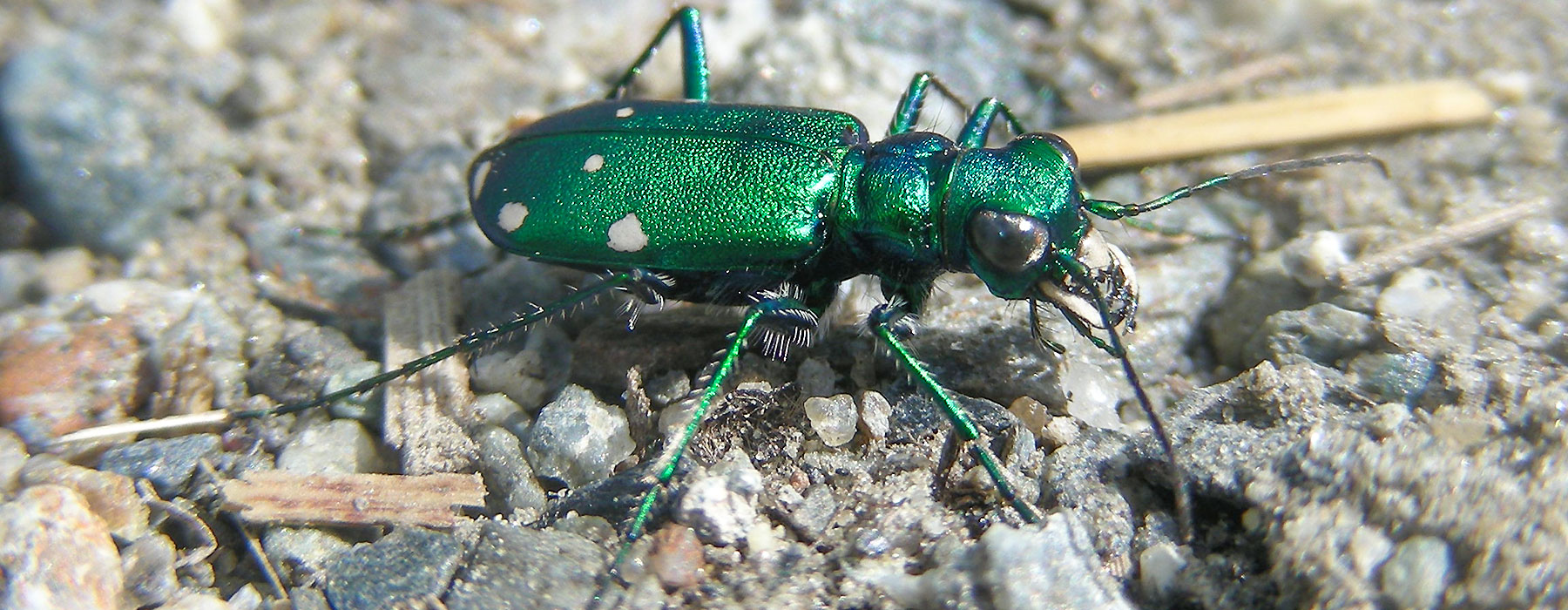Known for their aggressive predatory habits and lightning quick speed, tiger beetles capture the passion of many naturalists. Their large bulging eyes, long, slender legs and large curved mandibles make these beetles one of the scariest predators in their tiny world, but also one of the most beautiful.
Many have colorful or bold patterns that are quite attractive, and allow us to more easily identify them. There are over 100 species found in the United States, with 16 known to have occurred in Vermont, making these a relatively easy group of beetles to learn to identify. Over half of the species are considered conservation concern in Vermont.
Until recently, tiger beetles were placed in their own family, Cicindelidae. They are now considered to be ground beetles (family Carabidae) and in the subfamily Cicindelinae. Most species are restricted to open habitats such as shorelines, rocky areas, dirt roads and paths, and sandy areas. Many have very specific habitat needs. Nine species are considered to be of conservation concern in Vermont. One of them, the federally threatened Puritan Tiger Beetle, is extirpated.

Cobblestone Tiger Beetle mate guarding. / © K.P. McFarland
Life Cycle
Tiger beetles are solitary insects. The male and female tiger beetles come together for mating. Soon after mating, the male beetle holds the female beetle with the help of his mandibles and rides on her back, to prevent other males from mating. This behavior is known as mate guarding.
The females select a site and digs a small hole to deposit one egg. Females are extremely specific about oviposition sites, and appear to favor damp soil. The holes are covered with soil to hide the eggs from predators. After hatching, the larva burrows a cylindrical tunnel with its large and powerful mandibles. It will deepen the tunnel as it grows. The larva waits at the top of its burrow and pops its head out when prey is within striking range. It flips its head backwards and grabs the prey with its mandibles and pulls it into its burrow. The larvae have small hooks on the back of their abdomen to grip onto the sides of their burrows.
The larval pass through three instars. The third and the last stage of larval development is the pupa. To pupate, a larva forms a pupal cell within its burrow, and then covers the burrow entrance with soil and dirt. The entire process of larval development can take up to three years, and it depends on factors like, climate of the area and availability of food. When food is scarce, the developmental process can be much longer. Food scarcity can also have a negative effect on the reproductive ability of adults.







